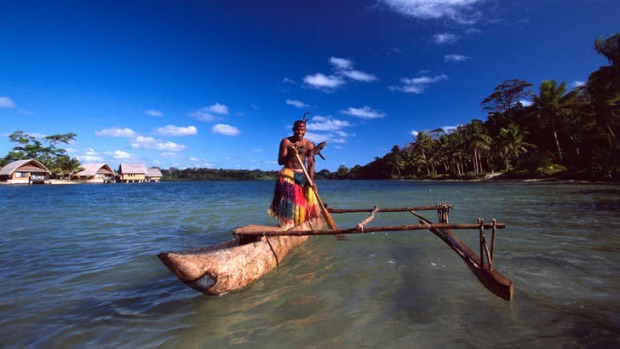
Rather than play down old cannibalistic customs, Malakula runs tours on them, writes Lance Richardson.
At a certain point, propellers whirring high above a reef, the Mormon missionary pulls out a palm fan and begins to flap it methodically, circulating an acrid bouquet of human sweat around the cabin. Two seats behind, I want to lean forward and clear my throat: Hey buddy, maybe loosen the tie, pop a button instead? This is the South Pacific, after all. "No Mo Wori" is written on the wall of Port Vila's domestic airport, a gospel of sorts in Bislama, the creole language of Vanuatu. It occurs to me that polished name tags and starched collars are as fish-out-of-water here as French baguettes, though I've seen plenty of those around as well.
The plane is stifling, with 16 intimate seats. Outside, an ocean of deep Klein blue gives way to shallow turquoise, then the green tangle of Malakula, studded with palm trees like a pin cushion floating on the sea. The closer we come to the airstrip the more coconut palms there are, until there is nothing else: a copra plantation.
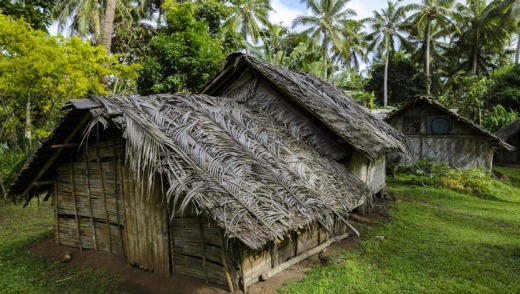
Malakula is famed for copra, which is processed into everything from cooking oil to biofuel; along with beef, it remains Vanuatu's most lucrative export. But the island is otherwise mysterious, despite being the second-largest landmass in the entire archipelago (after Espiritu Santo). Tourist literature defines it as the "island of cannibalism and custom" - a vague but darkly thrilling description - with 30 indigenous languages and 20,000 residents. To this I would add it is the island of deranged roads, some so disfigured by rain they belong in a museum. Beyond Lakatoro, the administrative centre, there is almost no electricity, making it a hallucinatory place after sunset, with fires in the jungle and hushed voices like spirits whispering through the banyan trees.
Etienne, from the Malekula Bungalow Association, offers a telling statistic. Of all the visitors to Vanuatu - 108,161 in 2012 - 80 per cent stay on Efate, home to Port Vila and the international airport. The island of Tanna draws 15 per cent because of Mount Yasur, sometimes described as "the world's most accessible volcano". According to Etienne, just 0.01 per cent fly to Malakula. This suggests a great deal about the sort of experience one should expect here. It's also a number that will have a certain type of traveller searching for the flight schedule immediately.
I come to Malakula for five days. I come without my computer or phone - little beyond a paperback and an open mind. I come, too, hoping for some small insight into "cannibalism and custom", and find a way of life where most everything is organic and sustainable. Malakula is far from romantic; it is enlightening, though, a reminder of what and how much a human being needs to live decently. My married guides, Erima and Fernand, carry a bag between them that is smaller than my own. When I offer to shout Erima at a roadside refreshment stand she glances beyond the biscuits and soft drinks and says, smoothing her dress, "Four pens, please".
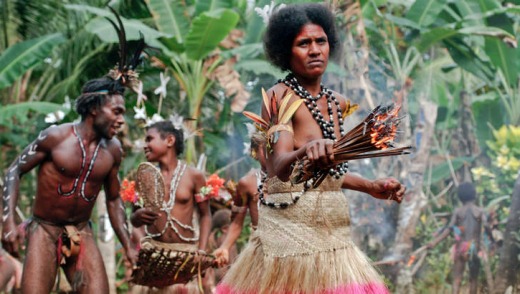
The recent addition of a call centre in Lakatoro, organising all attractions and accommodation across the island, has made travel on Malakula relatively easy, at least in the planning stages. There are three worthy tours within a 30-minute drive of the airstrip alone: a Small Nambas tour, a Big Nambas tour, and a cannibal site tour.
A "namba" is a decorated sheath traditionally worn by adult males; these sheaths are used to differentiate the Malakula population into two distinct groups (covering numerous tribes). To clear up any confusion, Erima explains that though the Small Nambas wear small nambas and the Big Nambas wear big nambas, this is aesthetic preference rather than a sign of biological inequality. Then she laughs and widens her eyes.
Enough said.
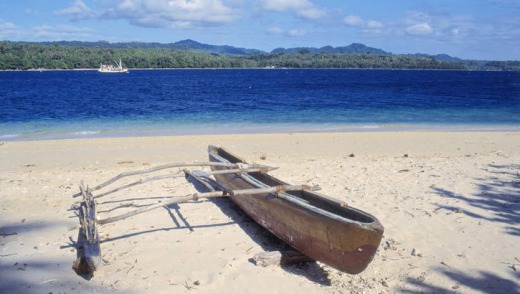
The Small Nambas tour, at Rano, focuses on the Nemi Gortien Ser (Spirit of Unity) tribe, and has a great deal of shimmying in the sunlight. One dance calls the wind; a man jogs into the jungle clearing with a towering headdress, representing an eagle. The women perform a flower dance, bake shredded yams in bamboo sticks, and weave palm fronds into a floor mat. It is energetic and illustrative, with careful explanations by an English translator. The Big Nambas tour, by contrast, is largely inscrutable, the dancers at Mae showing just enough Nalint custom to make you intrigued - and then stopping. Perhaps this is fitting for a group renowned as secretive; they live deeper in the bush than the Small Nambas, who they occasionally fought in the past and vary from on almost every point.
The cannibalism site tour is fairly self-explanatory. Here is the "naserah" (ceremonial site) of the Amelbati tribe; here is where the chief once sat; here is where they strung up their enemies near the tom toms, which drowned out the screams. "The people in the past used a magic chant to make heavy things light, so they could drag up stone from the sea," Erima says, pushing her way through frangipanis, which make the place look beautiful even as we're examining the fire-pit. All of this is reported without pride or shame, though Erima cracks a joke. Regarding a white missionary: "Oh, he must be very clean! He will taste good."
There are no cannibals left on Malakula, just as nambas are worn sparingly today. These three tours are dazzling historical artefacts. They are pageantry, acts of cultural preservation.
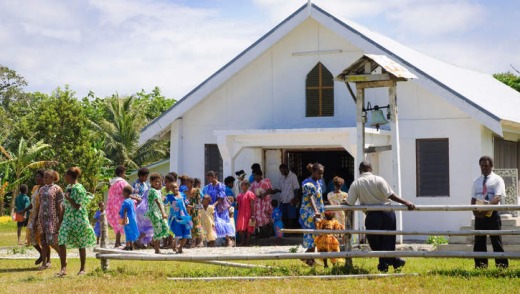
Things have changed considerably across the years, and I begin to get a sense of this while visiting Tenmaru, a small settlement on the western side of the island where Max Arnambat has built a bungalow on top of a volcanic rock. "My grandfather, chief Nihambat, lived here," he tells me. "One day in 1909 the blackbirders came and took him away to Queensland.""Blackbirding" was the deceptive recruitment of island labourers, lured to the sugarcane plantations by promises of tobacco and alcohol. Some, like Nihambat, were eventually returned; many never were. And those who came home were profoundly changed: "He came back to his people and told them, "I have brought a new religion'," Arnambat says.
Missionaries are a conspicuous presence on Malakula. Their reach is everywhere: the driver is Presbyterian, Erima is Mormon, the Nemi Gortien Ser are Protestant; there are Seventh-day Adventists, Methodists, Catholics, Jehovah's Witnesses, and a handful of other denominations. "What is your religion?" is a common question, trumped only by "Where are you from?" and "Have you tried kava yet?" Imported religion has altered the rhythm of the island, eradicated cannibalism, and made it a self-consciously Christian place. I see two books in five days: the New Testament in a glove box; and the Book of Mormon clutched by a man scrambling off the ferry to Wala.
But the situation is more complicated than these images suggest.
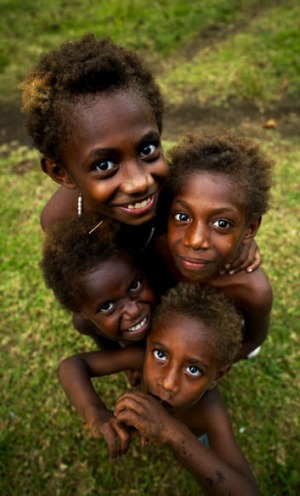
To gain insight into Malakula circa 2013, I follow Erima and Fernand into the jungle on a two-day trek through the northern reaches of the island. On maps, Malakula looks like a sitting dog. This is the Dog's Head Walk - nose to ear.
What unfolds - besides the mud, the sweat, the river bathing, the clearings hemmed in by canopies of cocoa leaves, a moment with a spider, a bone-crunching ride on the back of a truck with passing children yelling, "Hello white man!" - is the counterpoint to those tribal tours and harrowing tales of cultural assault: namely, life today.
At Womul village, the entire population is gathered beneath a tree, arguing the case of a pregnant girl and the man who denies that the baby belongs to him. On the way to Botco, we pass half the village carrying their children to the coast for measles vaccinations. Women wander barefoot through the jungle to "gardens", where they collect taro and bananas. Then there are the taboos: Erima tallies them with hushed solemnity. For the next 30 minutes, in this jungle pass, I must not break a branch or answer a call of nature; otherwise, spirits will punish me like the time the Dutch girl scoffed and they twisted her ankle. "You will discover many different things to add into your notebook," Erima tells me - including this surviving belief in animism.
Some of the taboos have her smiling a wry sort of smile. On the chief of Kalele: "I'm not allowed to speak his name, but I will spell it - J. A. M. I. N. O." Other people she is not meant to talk to include "the younger brother of the chief, as he is married to Fernand's older brother's daughter". She speaks to them anyway because - well, shrug. "Old rules!"
The high point of this two-day walk - indeed, my entire visit to Malakula - comes at the village of Kalele, deep in the interior on a manicured bluff. There is hardly any money here, but the settlement is far from grim, characterised by exquisite bamboo houses and plenty of food. I stay overnight in a tiny hut where every single element is wrought from the jungle to which it will one day return. The school sits in the centre of the village. Children gather outside my door with exercise books, imitating my scribbling. Later, at dusk, the kids are replaced by men, who deliver prawns fresh from the river alongside cups of bitter-tasting root water.
"Tell the Australians this is a good place," says Knox Malili, a ship captain who ferries copra across to the processing plant on Espiritu Santo. He points into the sky. "Look, we drink kava in the moonlight."
Then he guffaws heartily, raising his glass. "Do you feel it, Mr Lance?"
I'm starting to, Mr Malili. I really am.
Lance Richardson travelled courtesy of Vanuatu Tourism Office and Air Vanuatu.
FAST FACTS
Getting there Air Vanuatu has a fare to Port Vila for about $570 low-season return from Sydney including taxes for the daily 3hr 25min flight. From Melbourne, you pay about $100 more for the weekly 3hr 45min flight. Air Vanuatu operates domestic air services between the main islands, including Malakula. See airvanuatu.com.
Staying there The timing of flights means a stay in Port Vila is inevitable. A good option for recuperating in comfort is the Holiday Inn Resort, where standard rooms start from $360 a night. Phone 1800 007 697, see ihg.com/holidayinnresorts.
Malakula has a variety of basic but comfortable accommodations. Two standouts are Nawori Sea View Bungalow, from 2750 vatu ($30) a night, and the exquisite Big Nambas Bungalow at Tenmaru, at 2800 vatu a night.
See + do All accommodation, transfers and tour bookings on Malakula should be made through the Malampa.travel Call Centre. Phone +678 48888, see malampa.travel.
The Small Nambas tour at Rano and the Big Nambas tour at Mae each cost 5000 vatu a person. The cannibal site tour at Amelbati is 3500 vatu a person.
The terrific Dog's Head Walk, thrusting travellers into contemporary life, takes two nights and is moderately difficult. Price is 23,500 vatu a person including guide, accommodation and meals.
vanuatu.travel
OTHER ISLANDS OF VANUATU
Efate The administrative heart of the country and the first stop for most, Efate houses Port Vila, with shops, galleries, restaurants and luxury hotels. Travel north around the island to uncover quiet beaches such as the one at Eton.
Tanna Mount Yasur, Tanna's volcano, has been active for more than 800 years. Its contained vertical eruptions make it safe to approach, and many visitors have, including Captain Cook. The cone is a sacred site of the John Frum cargo cult.
Espiritu Santo "Santo" offers some of the best diving in the archipelago, including World War II sites such as Million Dollar Point, where the Americans dumped their equipment, and the SS President Coolidge, a luxury liner now underwater.
Pentecost Pentecost is synonymous with land diving, an alarming precursor to bungy jumping, with men tying tree vines around their ankles and vaulting off wooden towers. The practice was stopped by missionaries in the mid-19th century but has since been revived.
Ambrym Ambrym is the island of black magic, with stories of sorcery and witchcraft. There are also two volcanoes, Mount Marum and Mount Benbow, and an active population of resident dugongs.